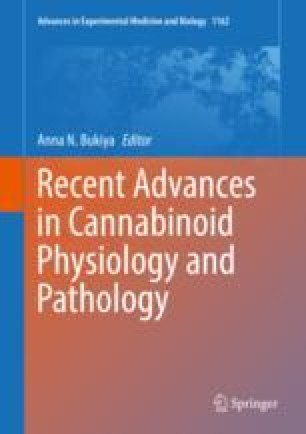 “The neurodegeneration, neuro-inflammation and mitochondrial dysfunction which occur by methamphetamine (METH) abuse or administration are serious and motivation therapeutic approaches for inhibition of these types of neurodegeneration. As we know, METH through Toll-like receptors (TLRs), specially type 4, and NF-κB signaling pathway causes neuro-inflammation and mitochondrial dysfunction.
“The neurodegeneration, neuro-inflammation and mitochondrial dysfunction which occur by methamphetamine (METH) abuse or administration are serious and motivation therapeutic approaches for inhibition of these types of neurodegeneration. As we know, METH through Toll-like receptors (TLRs), specially type 4, and NF-κB signaling pathway causes neuro-inflammation and mitochondrial dysfunction.
Neuroprotective approach for management of METH-induced neurodegeneration, inflammation and mitochondrial dysfunction, through a novel neuroprotective agent is continuously being superior to any kind of other therapeutic strategy. Therefore, the clarification, introduction and development of efficacious novel neuroprotective agent are demanded. During recent years, using new neuroprotective agent with therapeutic probability for treatment of METH-induced neuro-inflammation and mitochondrial dysfunction has been astoundingly increased.
Previous studies have stated the neuroprotective and anti-inflammatory roles of cannabinoid derivate such as cannabidiol (CBD) and delta-9-tetrahydrocannabinol (Δ9-THC) in multiple neurodegenerative events and diseases.
According to literature cannabinoid derivate, by inhibition of TLR4 and activation of NF-κB signaling pathway, exerts their anti-inflammatory and neuroprotective effects and cause mitochondrial biogenesis. Thus we hypothesized that by using cannabinoids in METH dependent subject it would provide neuroprotection against METH-induced neurodegeneration, neuro-inflammation and mitochondrial dysfunction and probably can manage sequels of METH-induced neurochemical abuses via modulation of TLR4/NF-κB signaling pathway.
In this article, we tried to discuss our hypothesis regarding the possible role of CBD and Δ9-THC, as a potent neuroprotective and anti-inflammatory agents, in inhibition or treatment of METH-induced neurodegeneration, neuro-inflammation and mitochondrial dysfunction through its effects on TLR4/NF-κB signaling pathway.”
https://www.ncbi.nlm.nih.gov/pubmed/31465975
https://www.sciencedirect.com/science/article/abs/pii/S030698771930739X?via%3Dihub



 “Given their anti-inflammatory properties, cannabinoids have been shown to be neuroprotective agents and to reduce excitotoxicity, through the activation of the Cannabinoid receptor type 1 (CB1r).
“Given their anti-inflammatory properties, cannabinoids have been shown to be neuroprotective agents and to reduce excitotoxicity, through the activation of the Cannabinoid receptor type 1 (CB1r). “Nuclear factor erythroid 2-related factor 2 (NRF2) is a pleiotropic transcription factor that has neuroprotective and anti-inflammatory effects, regulating more than 250 genes. As NRF2,
“Nuclear factor erythroid 2-related factor 2 (NRF2) is a pleiotropic transcription factor that has neuroprotective and anti-inflammatory effects, regulating more than 250 genes. As NRF2,  “As the survival of preterm infants has increased significantly, germinal matrix hemorrhage (GMH) has become an important public health issue. Nevertheless, treatment strategies for the direct neuronal injury are still scarce. The present study aims to analyze the neuroprotective properties of
“As the survival of preterm infants has increased significantly, germinal matrix hemorrhage (GMH) has become an important public health issue. Nevertheless, treatment strategies for the direct neuronal injury are still scarce. The present study aims to analyze the neuroprotective properties of  “The basal ganglia (BG), an organized network of nuclei that integrates cortical information, play a crucial role in controlling motor function. In fact, movement disorders such as Parkinson’s disease (PD) and Huntington’s disease (HD) are caused by the degeneration of specific structures within the BG.
“The basal ganglia (BG), an organized network of nuclei that integrates cortical information, play a crucial role in controlling motor function. In fact, movement disorders such as Parkinson’s disease (PD) and Huntington’s disease (HD) are caused by the degeneration of specific structures within the BG. “In a recent study, we described the neuroprotective properties of VCE-003.2-an aminoquinone derivative of the non-psychotropic phytocannabinoid cannabigerol (CBG)-administered intraperitoneally (i.p.) in an inflammatory model of Parkinson’s disease (PD). We also demonstrated that these properties derive from its activity on the peroxisome proliferator-activated receptor-γ, in particular at a regulatory site within this receptor type.
“In a recent study, we described the neuroprotective properties of VCE-003.2-an aminoquinone derivative of the non-psychotropic phytocannabinoid cannabigerol (CBG)-administered intraperitoneally (i.p.) in an inflammatory model of Parkinson’s disease (PD). We also demonstrated that these properties derive from its activity on the peroxisome proliferator-activated receptor-γ, in particular at a regulatory site within this receptor type. “Agitation is a prevalent and difficult-to-treat symptom in patients with moderate-to-severe Alzheimer’s disease (AD). Though there are nonpharmacological and pharmacological interventions recommended for the treatment of agitation, the efficacy of these are modest and not always consistent. Furthermore, the safety profiles of currently prescribed medications are questionable.
“Agitation is a prevalent and difficult-to-treat symptom in patients with moderate-to-severe Alzheimer’s disease (AD). Though there are nonpharmacological and pharmacological interventions recommended for the treatment of agitation, the efficacy of these are modest and not always consistent. Furthermore, the safety profiles of currently prescribed medications are questionable. “The Cannabis plant has been used for many of years as a medicinal agent in the relief of pain and seizures. It contains approximately 540 natural compounds including more than 100 that have been identified as phytocannabinoids due to their shared chemical structure. The predominant psychotropic component is Δ9-tetrahydrocannabinol (Δ9-THC), while the major non-psychoactive ingredient is
“The Cannabis plant has been used for many of years as a medicinal agent in the relief of pain and seizures. It contains approximately 540 natural compounds including more than 100 that have been identified as phytocannabinoids due to their shared chemical structure. The predominant psychotropic component is Δ9-tetrahydrocannabinol (Δ9-THC), while the major non-psychoactive ingredient is  “Cognitive impairment is a major source of disability in schizophrenia and current antipsychotic drugs (APDs) have minimal efficacy for this symptom domain.
“Cognitive impairment is a major source of disability in schizophrenia and current antipsychotic drugs (APDs) have minimal efficacy for this symptom domain.